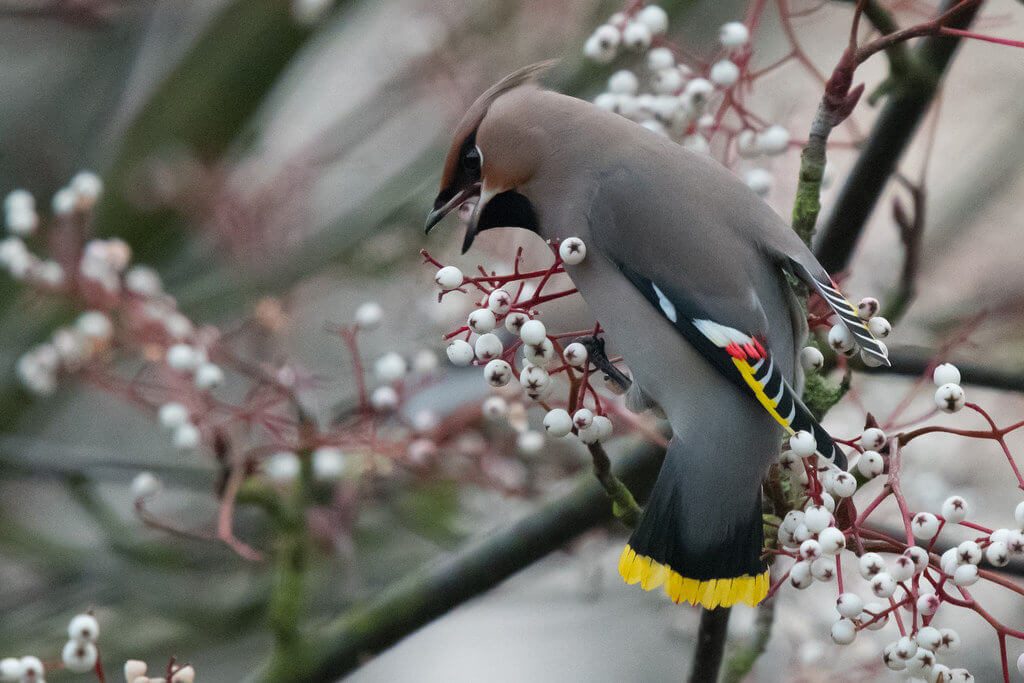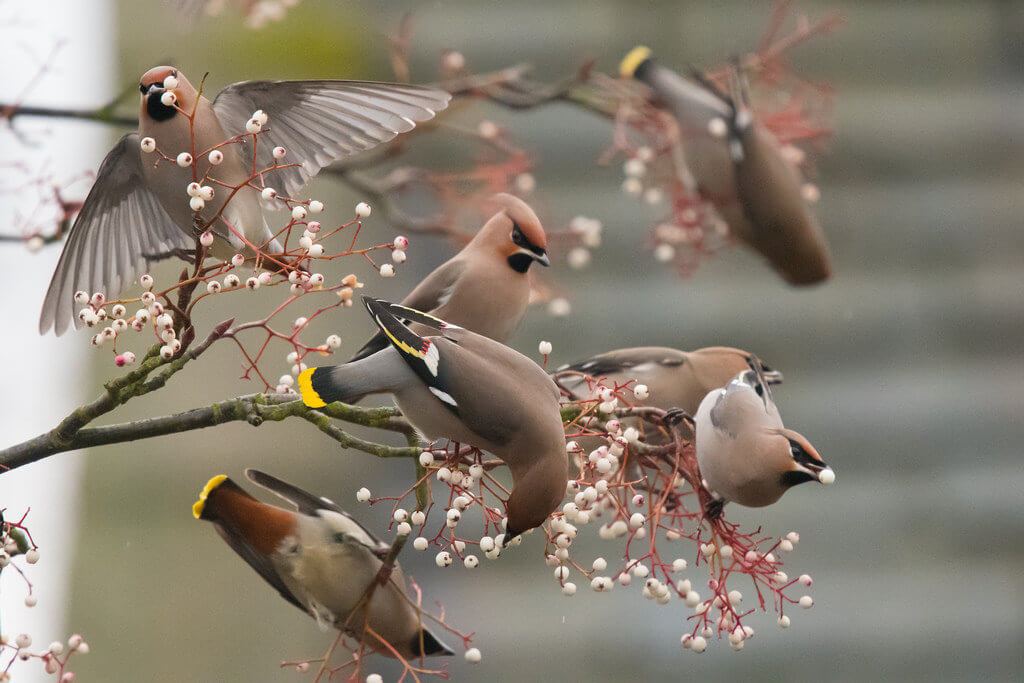
Tim Melling writes: It does not seem to be well known but adult male (Bohemian) Waxwings can show red waxy tips on the tail, as well as the wing. Some have red feather shafts in the tail but only a very few have small waxy tips too. You can just see this feature on the central two feathers on this individual with his tail spread. The red waxy tips are actually the feather shaft, which is flattened at the tip and filled with red pigment. The waxy appearance is the shiny transparent sheath or quill that you see in growing feathers (The ones I usually see are in the remains of dead Woodpigeon squabs that fall out of their feeble nests before they can fly).
Waxwings start to moult in August each year, which is why we hardly ever see stripy juveniles without the black bib in Britain, as Waxwings don’t breed in Britain, and only arrive after the autumn body moult. In their second autumn moult they acquire a few waxy tips, but it’s not until the third moult that they get a full set of waxy tips like this one. Research on American Cedar Waxwings showed that breeding pairs usually mate with an individual with a similar number of waxy tips. Older pairs had larger clutch and brood sizes, and fledged more young. So the red tips act as a signal so birds can choose an appropriately aged partner. This is likely to be the case in Bohemian Waxwings too but I don’t know if anyone has done similar research on this species.
And why are they known as Bohemian Waxwings? Well in Britain we sometimes add the word “French” for something unusual (eg French (Mag)pie is an old name for Great Grey Shrike, and French Yellowhammer for Cirl Bunting). In Germany they use the epithet Böhme (Bohemian) in the same way, for something that is less than usual. So way back in 1555 Conrad Gesner called this Garrulus bohemicus, which is literally Bohemian Jay. There was no name for it in English until John Ray in 1678 coined the name Bohemian Chatterer (which is what garrulus means). Not too long afterwards the Cedar Waxwing was called the Chatterer of Carolina (Catesby 1731). In 1776 Thomas Pennant called the European species the Waxen Chatterer, because of the wing feathers that look like they have been dipped in sealing wax. It wasn’t until 1817 that James Stephens coined the term Waxwing, which gained immediate acceptance, and has been with us ever since. In Britain we are quite happy to simply call them Waxwings, because the other two Waxwing species aren’t really on our radar (although Cedar Waxwing is an extremely rare visitor to Britain). In America where two species regularly occur, they have to qualify this species as Bohemian Waxwing.
Here’s a group shot of a feeding frenzy taken at the same time:

Taken with Nikon D500, Nikkor 300mm lens with 1.4 converter, f5.6 1/1000 ISO 8000
More wildlife photographs are on my Flickr page .
[registration_form]
There have been some amazing pictures of Waxwings posted online this winter – these are the best two I have seen; wonderful shots!
Many thanks indeed for such a complimentary comment. I was afraid that the light was too bad for good photographs and have looked with envy at others’ sunshine Waxwings.